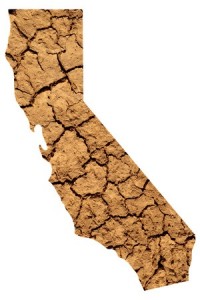 Resilient Lands and Waters partnership will focus public and private resources towards conserving and restoring the Sierra-Cascade California Headwaters
Resilient Lands and Waters partnership will focus public and private resources towards conserving and restoring the Sierra-Cascade California Headwaters
Agriculture Secretary Tom Vilsack, Interior Deputy Secretary Michael Connor and California Secretary for Natural Resources John Laird outline new federal and state efforts to support Californians impacted by drought, including large-scale landscape management, conservation efforts, and water infrastructure support. Agriculture Secretary Vilsack Announces $150 Million, New Partnership to Support Water Quality and Quantity in Drought-Stricken California
Secretary Vilsack announcement
Agriculture Secretary Tom Vilsack today joined Interior Deputy Secretary Mike Connor and California Secretary for Natural Resources John Laird to announce a new partnership focused on conserving and restoring the Sierra-Cascade California Headwaters, as part of President Obama’s Resilient Lands and Waters initiative. Over the next two years, the U.S. Department of Agriculture’s (USDA) Forest Service (FS) and Natural Resources Conservation Service (NRCS) will invest $130 million in the partnership, which also includes the Interior Department, the State of California, non-profits, and private landowners. In total, the partnership will yield a minimum investment of $210 million by all partners. The Sierra-Cascade California Headwaters provides 25 million Californians with drinking water and much of the water for irrigated agriculture in the Sacramento and San Joaquin Valleys.

Vilsack
In addition to the partnership, USDA is announcing that $13.7 million is available to California producers and ranchers through NRCS’s Environmental Quality Incentives Program (EQIP), and approximately $6 million remains available to drought-stricken communities through Rural Development’s Emergency Community Water Assistance Grants (ECWAG), making nearly $20 million available to drought-affected communities.
“As several years of historic drought continue to plague parts of the Western United States, there is a significant opportunity and responsibility across federal, state and private lands to protect and improve the landscapes that generate our most critical water supplies,” said Vilsack. “Healthy forests and meadows play a key role in ensuring water quality, yield and reliability throughout the year. Looking beyond this particular drought, resources announced today will help us add resiliency to natural resource systems to cope with recurring drought and changing climate patterns.”
The Resilient Lands and Waters initiative is a key part of the Obama Administration’s Climate and Natural Resources Priority Agenda, a first of its kind, comprehensive commitment across the Federal Government to support the resilience of America’s vital natural resources. Through this partnership under the Resilient Lands and Waters initiative, USDA, DOI, the State of California, and local partners will direct a minimum of $210 million in combined resources towards restoration that will help improve water quality and quantity, promote healthy forests, and reduce wildfire risk in the Sierra-Cascade California Headwaters region.

Michael L. Connor
“Climate change affects every corner of our nation from the Sierra-Cascades to the Everglades. The deepening impact of the ongoing drought is just one example of how it influences all of us,” said Deputy Interior Secretary Michael L. Connor. “In collaboration with other governmental agencies and partners, we are taking a comprehensive, science-based long term view of how to best make our treasured lands and precious waterways more resilient to the impacts of climate change.”
Deputy Interior Secretary Michael L. Connor comments
The federal partnership dovetails with Governor Jerry Brown’s California Water Action Plan, a suite of short- and long-term goals to put California on a path to more resilient and reliable water systems and healthy ecosystems over the next five years. Over the next year, California will commit as much as $81 million in ecosystem restoration in the Sierra Nevada.

John Laird
“California’s Cascade and Sierra Nevada mountain ecosystems are the lifeblood of water for 25 million Californians, our agricultural industry, and the health of downstream estuaries and species,” said Secretary Laird. “Trying to maintain this ecosystem health, in the face of a changing climate, requires that all those responsible – especially the state and federal governments –work together to meet this challenge. That is why the California state administration is pleased with today’s announcement, and looks forward to continuing to work with our federal partners.”
California Secretary for Natural Resources John Laird comments
Last month, USDA announced the availability of $21 million through EQIP to help farmers and ranchers apply science-based solutions to mitigate the short and long term effects of drought. Today, Secretary Vilsack announced that 65 percent of the available funds, or $13.7 million, are being reserved for California producers and ranchers. Applications are currently being accepted at local NRCS offices.
Vilsack also announced that USDA has provided $2.7 million in ECWAG funds for eight California communities and $1.98 million to the Coyote Band of Pomo Indians of California in 2015. The remaining ECWAG funding is available nationwide, and applications are accepted at any time through USDA’s Rural Development state and area offices.
Today’s announcement builds on the Obama Administration’s commitment to do everything it can to help the farmers, ranchers, small businesses, and communities facing severe impacts from one of the worst droughts in over a century. Currently, 35 percent of the West is facing severe to exceptional drought. In California, the mountain snowpack that supplies most of the water during the summer months is only a trace above zero. Drought threatens multiple sectors of the economy and leads to increased risks to communities on many fronts. That’s why the Administration’s efforts will help to address the drought challenge from all angles, from employing workers and providing food assistance to making long-term investments to support water efficiency and conservation and addressing wildfire. Through the creation of the National Drought Resilience Partnership, launched as part of the President’s Climate Action Plan, federal agencies are working closely with states, tribes and local governments to develop a coordinated response to drought.









